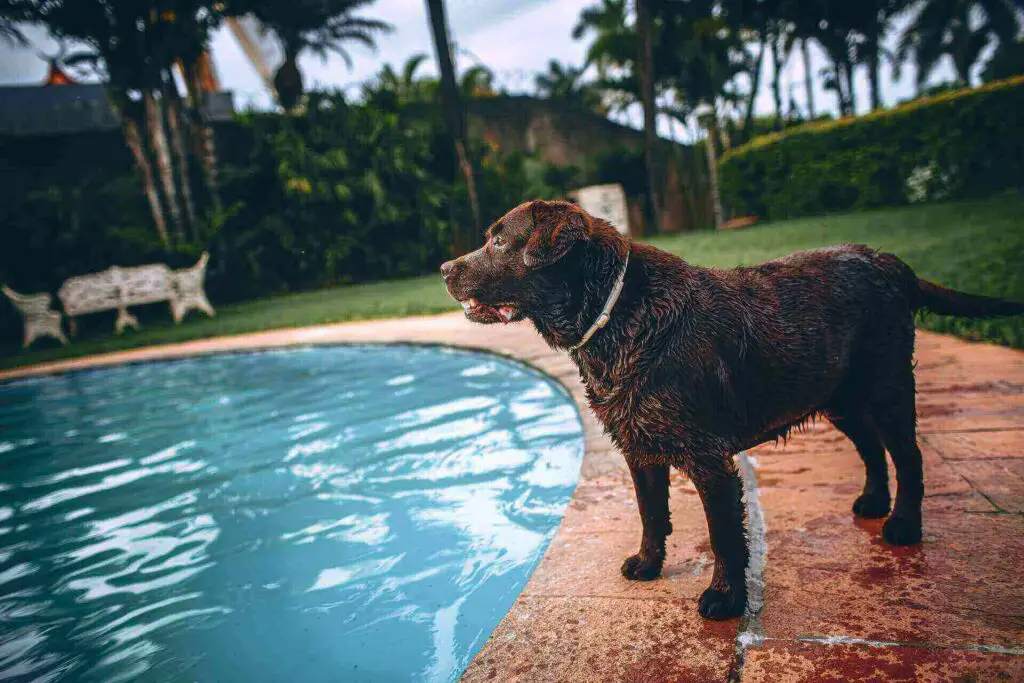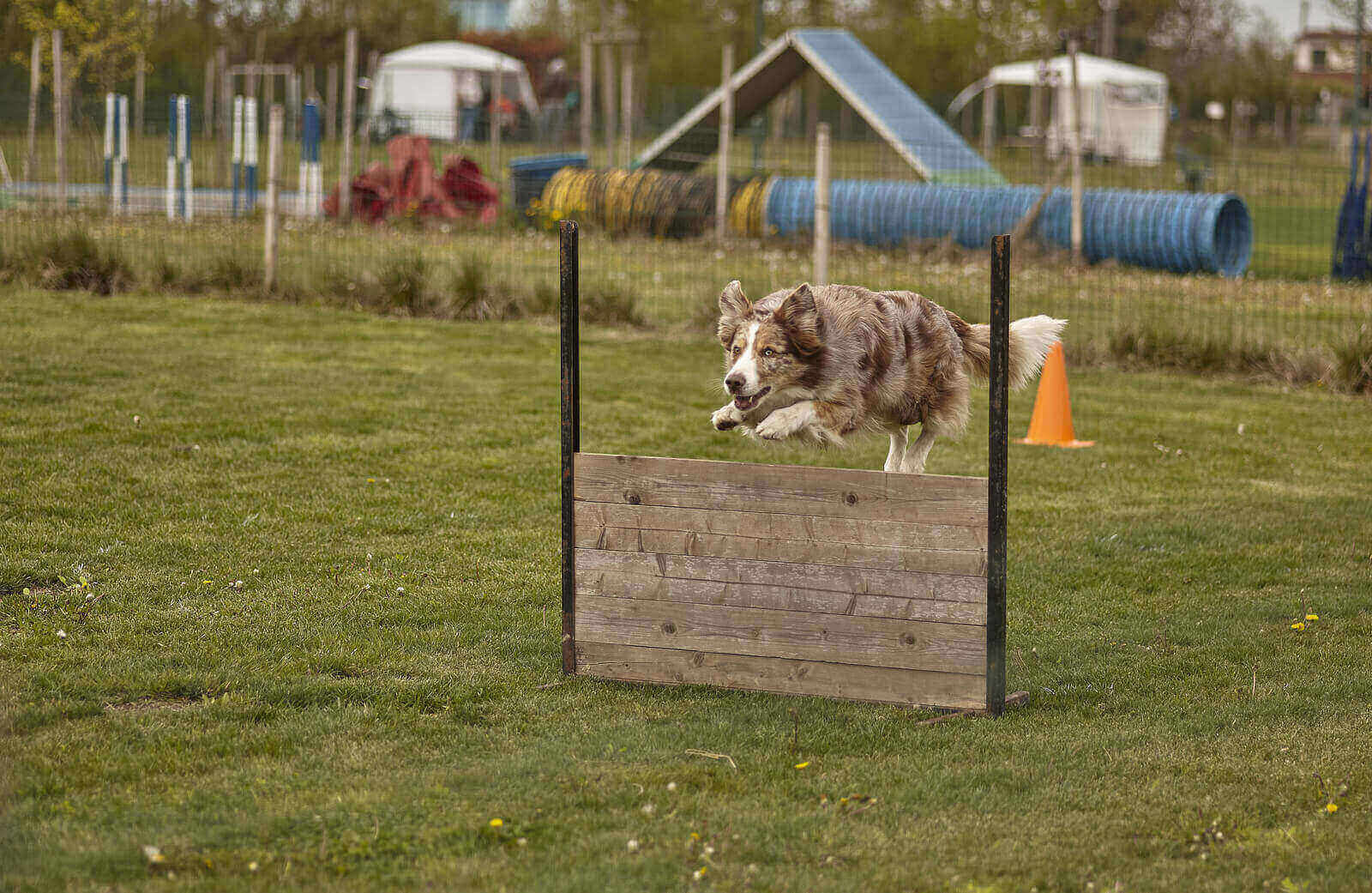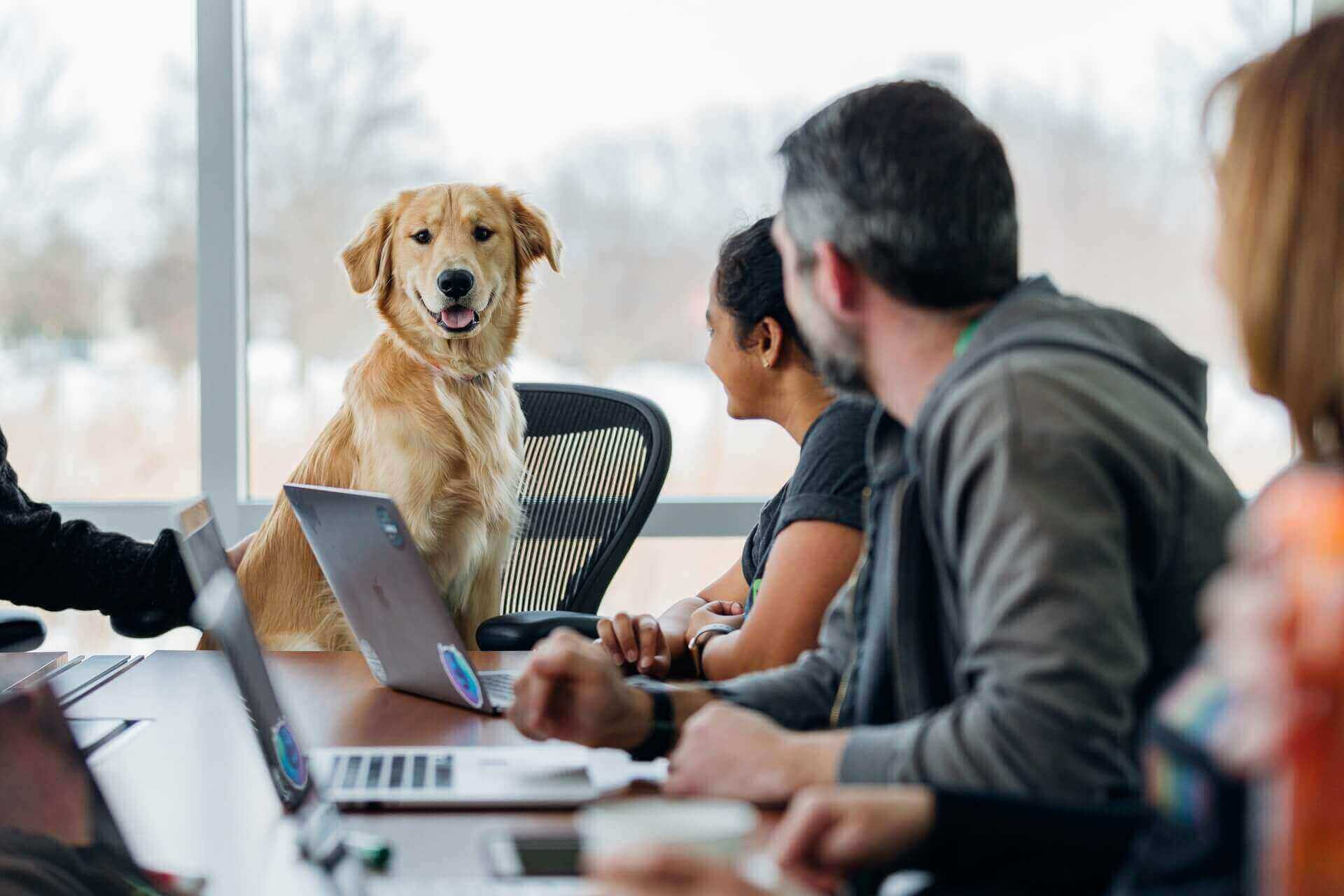Violent behavior in dogs is a very serious issue. It can be nerve-wracking to own an unpredictable, violent canine. We understand your concern. Dogs do love to be pet. But, there are some aggressive ones who may not give heed to your training or command. Check out these expert tips on how to calm an aggressive dog.
Please read. You are saving lives here, both human and animal.
What Are The Signs Of An Aggressive Dog?
Your dog is always talking to you. Understanding your pet’s body language is the key to develop a strong emotional bonding. In the event of aggression, pay attention to the warning signs. These signs help you to take timely action on how to calm an aggressive dog.

You must know to read the dog’s eyes. What is the difference between a friendly stare and a hard look? When the eyelids are relaxed and wide open, they imply cordiality. On the opposite, if the dog narrows his eyes, it indicates threat perception. The pupils would be hard and dark.
So, if your dog stares hard and growls, it is a sign of aggression. On your part, do not revert with direct eye contact. The animal would take you as an opponent and the situation may worsen.
The best way to calm an aggressive dog is to take a firm stand. Remember that dogs are highly sensitive, especially to their owners. Your nervousness will automatically influence the pet.
What does it mean when the pet avoids eye contact? It shows that he is nervous and polite. It is also a warning sign because nervousness can eventually lead to aggression.
Another important signage is the dog showing the white of his eyes. Also known as ‘whale eyes’, this stare indicates fear. Take precautionary measures because a fearful dog can dramatically turn aggressive. Follow the tips on how to calm an anxious aggressive dog.
Other Signs Of Aggression
Keep a lookout on the ears. Are they pressed flat against the head? It is a telltale sign of aggression or fear.
A dog that is snarling is telling you to be careful. Intense barking or growling is typically a precursor to biting. If the animal bares his teeth and gum, it indicates an attacking posture.
Lip licking can as well denote anxiety in the animal.
A raised and stiff tail can also represent assertiveness. If the hackles (the fur along the spine) are raised, it shows that the animal is aroused. Does your dog display all the signs mentioned here? Be careful and follow the tips on how to calm an aggressive dog with high anxiety.
Finally, if your pet snaps and bites, it is an obvious negative sign. Do not let the situation worsen to a bite. It can be fatal. Observe the strict suggestions mentioned here on how to calm an aggressive dog.
Why Is My Dog Getting Aggressive?
Various reasons contribute to canine aggression. Before we explain the different types, let us first dispel a popular myth.
Many of us still have a common misconception. We perceive some breeds as more aggressive than the rest. Certain breeds indeed have greater prey drives. At the same time, these breeds can also be the most loyal pets.
The truth is that all dogs can become rogue. Scientific studies on canine behavior deem this as inappropriate. It is unfair to assign aggressiveness to any specific breed.
You should know this before we tell you how to calm an aggressive dog. That said, aggressive animals with greater muscle buildup are naturally more fearsome.
Dog Seeing Another Dog Aggression
A negative response to other pets falls in the category of social aggression. It happens due to two main reasons, fear and dominance.
How to calm an aggressive dog towards other dogs? Primarily, you have to establish yourself as the pack leader. One of the methods of doing so is to place yourself as a physical barrier between the dogs.
You can instead use something else as the physical barrier. For example, take your dog behind a tree or a parked car whenever you meet another dog during walking.
Medical Reasons
You should introspect the medical aspect of how to calm an aggressive dog. Our big-hearted friends are very good at hiding their pain. However, sometimes the situation may become unbearable even for them.
Take your pet to the vet if he is showing aggression. If necessary, the doctor will prescribe certain medications. Will sedation calm an aggressive dog? It depends on the vet to decide whether your pet needs sedation.
Territorial Aggression
All dogs are territorial animals. This is why you see them ‘marking’ an area. However, some pets become fiercely protective of their territories. They respond by vehement barking and growling when anyone unfamiliar comes close.
How to calm an aggressive dog that behaves in this way? First things first, remember to put the ‘Beware of Dog’ signboard on your premises. You would not want an unsuspecting person to come to harm.
This is a tricky situation. Some breeds are meant to protect their territories. They are made that way in their genetic makeup. Even then, you should duly address excessive aggression.
Fear-Induced Aggression
Let us look in some depth at the inherent fear implicit in aggression. At its core, all aggressive behavior has some kind of fear-factor. Do remember that the opposite of fear is love, lots of love.
Dogs can have traumatic experiences in early life that scar them for a lifetime. This is particularly true when you are adopting your pet from the animal shelter.
Identify the trigger accurately. Then, work patiently on desensitizing the pet to the trigger. Your reassuring presence in the pet’s life is a major factor.
Proceed slowly with socialization. Avoid any kind of aggression from your end. How to calm an anxious aggressive dog?
Petting and vocal praises go a long way in calming canine anxiety. Follow petting best practices. Do not reward aggressive behavior with petting. Instead, reward only when your pet overcomes her anxiety, little by little.
Do not pat your pet on the head. That’s not how to calm an aggressive dog. Pet them where they can see your hand.
Avoid giving your pet a belly rub when he is exposing his belly but has his tail tucked between the legs. You might be encouraging his anxiety as an acceptable behavior.
Can Fear Aggressive Dogs Be Rehabilitated?
Remember that socializing an adult dog takes patience. Approach friendly and well-trained dogs gradually as your pet learns to befriend them.
Here’s another tip on how to calm an aggressive dog down. Do not pull hard at the leash as it stresses your pet. It can develop leash aggression in your pet. Instead, lead him aside gently by the collar.
You might also need to enroll your pet in animal behavior classes. Managed by experts, these are great places to help with rehabilitation.
Possessive Aggression
How to calm an aggressive dog that is very possessive? Dogs can become possessive about persons, places, and things. For example, territorial aggression is an expression of possessiveness about a place.
Your pet can become possessive of different things. These include his food bowl, a chew bone, or a favorite toy. He would typically react by snarling if anyone gets near or touches his things.
Do not neglect your pet though. Just let him understand that it is okay to be without you at times. This is how to calm an aggressive dog gradually. Learn how to calm an aggressive dog for grooming . Because they always tend to be possessive of their things and looks.
Dominance Aggression
In this form of aggression, your pet asserts himself or herself as the pack leader. He constantly tries to dominate circumstances.
You have to be confident. Assert your ownership over your pet. Although difficult, yet it is not impossible to calm an aggressive dog.
How Can I Train My Dominance Aggressive Dog?
Utilize your position as the food giver. For example, when he is asking for food, delay it purposefully for a few minutes. Instruct him to obey your commands and give rewards when he does so. It is a successful method on how to calm an aggressive dog.
Can You Train Aggression Out Of A Dog?
Yes, it is possible. Let us explain it with the example of territorial aggression.
The key idea here is to identify the animal’s threshold level. Just how far does it allow a stranger to come closer? It varies greatly from one dog to the next.
Clearly identify the threshold area. Classify it into a safe and reactive distance. Then, you can slowly reduce the reactive space with positive reinforcement training. Give your pet a treat and praise vocally every time he learns to trust an innocent stranger.
Of course, the owner has to undertake a major role in calming the dog. You will have to teach your pet to obey your command. It always takes a lot of patience and love on how to calm an aggressive dog.

How Do You Walk An Aggressive Dog?
Walking is the best exercise for dogs. It also offers a viable remedy on how to calm an aggressive dog.
Essentially, it helps with burning away all that pent-up energy. Besides, it offers an excellent opportunity to socialize.
Don’t use a retractable leash. Avoid choking and pinching collars. The same goes for electronic shock collars. These are punitive and make your dog averse.
How Do You Introduce An Aggressive Dog?
Introducing an aggressive dog should be done with proper caution. First of all, invest sufficient time in teaching basic obedience skills to your pet.
Keep in mind that dogs are inherently social animals. They always follow a mindset of social hierarchy even when you may not be aware of it. Nevertheless, your awareness holds the key to how to calm an aggressive dog around other dogs.
How To Calm An Aggressive Dog Around Other Dogs?
How do you calm an aggressive dog with a dominance problem? The basic training should always begin at home. For example, you have to be strict with enacting boundaries and limits for your dog at home. Socialize your dog but make sure you do it carefully. Otherwise, you may end up with lawsuits.
Do note that many dog bites happen when the owners try to separate a dog fight. Proceed with caution and position yourself only when you are sure of your stance. If you are unsure of bringing your dog towards another one, it is better to maintain your distance.
What Should You Do With An Aggressive Dog With Bite History?
How to stop dog aggression and biting? Do not take chances. If your pet has a biting history, you will have to practice placing a muzzle. The best you can do is choose a basket muzzle that allows the dog to pant while walking.
In the unfortunate incident that the dog bites you, be still. Do not hit the animal. It will only bite harder. You must command in a stern voice to let go.
If you are on the ground, cover your face. Slouch yourself to a ball and stay in that position. Once you are free to move, consult a doctor immediately.
Where To Surrender An Aggressive Dog?
Surrendering an aggressive dog is perhaps the most difficult choice for the owner. Dogs develop deep emotional bonds with their families. Surrendering can traumatize the poor animal and make him lose his trust completely.
Resort to it as the very last option. Always remember that it is never too late to train your dog. That said, if having the dog compromises your safety, find a good place where they would take your pet.
Aggressive Dog Training Tips
Throughout this article, you can find all the tips to calm an aggressive dog. In this section, we tell you what not to do while confronting a violent canine.
| Your Body Language | What the Dog Understands |
| Leaning from above | Something beyond their comfort zone |
| Smiling | You are baring your teeth. It is a sign of aggression. |
| Scoffing or yelling | It’s a vocal challenge |
| Running away and turning your back | Triggers for the hunting instinct |
| Eye contact | You are challenging. It is not the right method of how to calm an aggressive dog. |
| Bringing your face close to the dog | You are about to attack |
Why Is My Dog Suddenly Aggressive Towards Me?
Emotions such as possessiveness and jealousy can also result in an adverse reaction. It is called resource guarding. If you have more than one pet, this can be the reason behind aggression.
It is usually a result of poor socialization as a puppy. Also, different traumatic experiences contribute to turning a dog into a dangerous animal. Punishing pets also make them aggressive over time.
Medical reasons are often the underlying factor behind sudden aggression. An injured dog is more likely to behave hurtfully when you get near. Especially with older pets, arthritic joint pain can make a dog irritated.
Pay special attention to the paws. The pain can come from a thorn or pebble lodged in between the toes. During winter, regularly remove ice balls from the paws.
How To Calm An Aggressive Dog FAQ
Check out these FAQs to clarify your conception of aggressive dogs.
Can Aggressive Dogs Change?
Yes, they can. The training should begin at home. Your presence should be reassuring and authoritative.
How to stop dog aggression at home? Start with identifying the thing that is causing a possessive attitude in your pet. Gradually create detachment with that item. Slowly train your pet that it is acceptable for you to get near his food bowl.
Try offering valuable alternatives. For instance, you can place another food bowl with a more delicious option near his feeding area. As he learns to give up the original item of possessiveness, reward him. Learn how to calm an aggressive dog with high anxiety and the aggressive dog will change over time.
When you have more than one pet, divide your attention equally. Avoid over-indulging your pet if the possessiveness is becoming troublesome. Try keeping your pet on a leash away from you at times when he is seeking too much attention.
How To Deal With An Aggressive Dog?
Some pets are aggressive to anyone walking on the street. Others may display similar behavior whenever someone enters the yard.
Aggression inherently means that he is asserting his position as the pack leader. Use the classical conditioning method for training. Associate the experience of positive interaction with a good treat.
It is usually easier for obedient dogs. When your dog is not around other dogs, keep practicing obedience skills like sit and stay. With sufficient training, your pet will develop impulse control at your command.
Use walking as a training tactic. When your pet wants to go for a walk, wait for some time, and then proceed. Let him understand that you are the owner. It is on your terms that he must obey.
You should also choose a friendly dog for an introduction. Avoid other aggressive canines as it will only worsen the situation. You need to be always ready with how to calm an aggressive dog that isn’t yours.
Will Neutering Calm An Aggressive Dog?
Will spaying calm an aggressive dog? It is a common conception that spayed or neutered dogs are less violent. It can be true to some extent, but the scientific evidence on this is largely inconclusive.
Whether to spay a dog or keep it intact is a decision that the vet should help you to take. In this respect, it is good to remember a fundamental truth. Neutering is not an assured solution to aggressiveness. Even a spayed dog can exhibit aggressive behaviors.

Takeaway – How To Calm An Aggressive Dog Down?
Dealing with an aggressive dog presents a complex situation for the owner. It is an additional challenge that you must undertake. You have to be patient with training and have hope that your pet will overcome his insecurities.
See to that your pet has plenty of exercise. Also, you should discuss with the vet about neutering. While you train an aggressive dog, always consider safety gear like a muzzle.
We sincerely hope that you have a good and obedient pet.

Welcome to Learn About Pet. My name is Rajkumar Ravichandran and I love all pets, travel, and amazing food. I write about my passion and personal experience caring for multiple pets in this blog! ❤️
Post Disclaimer
DISCLAIMER: THIS BLOG OR WEBSITE, "Learn About Pet", DOES NOT PROVIDE YOU WITH MEDICAL ADVICE AND IS NOT A SUBSTITUTE FOR MEDICAL ADVICE. ALWAYS GET IN TOUCH WITH YOUR PERSONAL VETERINARIAN AND USE INFORMATION HERE AS GENERAL ADVICE.
The information, including but not limited to, text, graphics, images and other material contained on this website are for informational purposes only. No material on this site is intended to be a substitute for professional veterinary advice, food recommendation, diagnosis, or treatment. Always seek the advice of your veterinarian or other qualified health care provider with any questions you may have regarding a medical condition or for pet food related questions.







